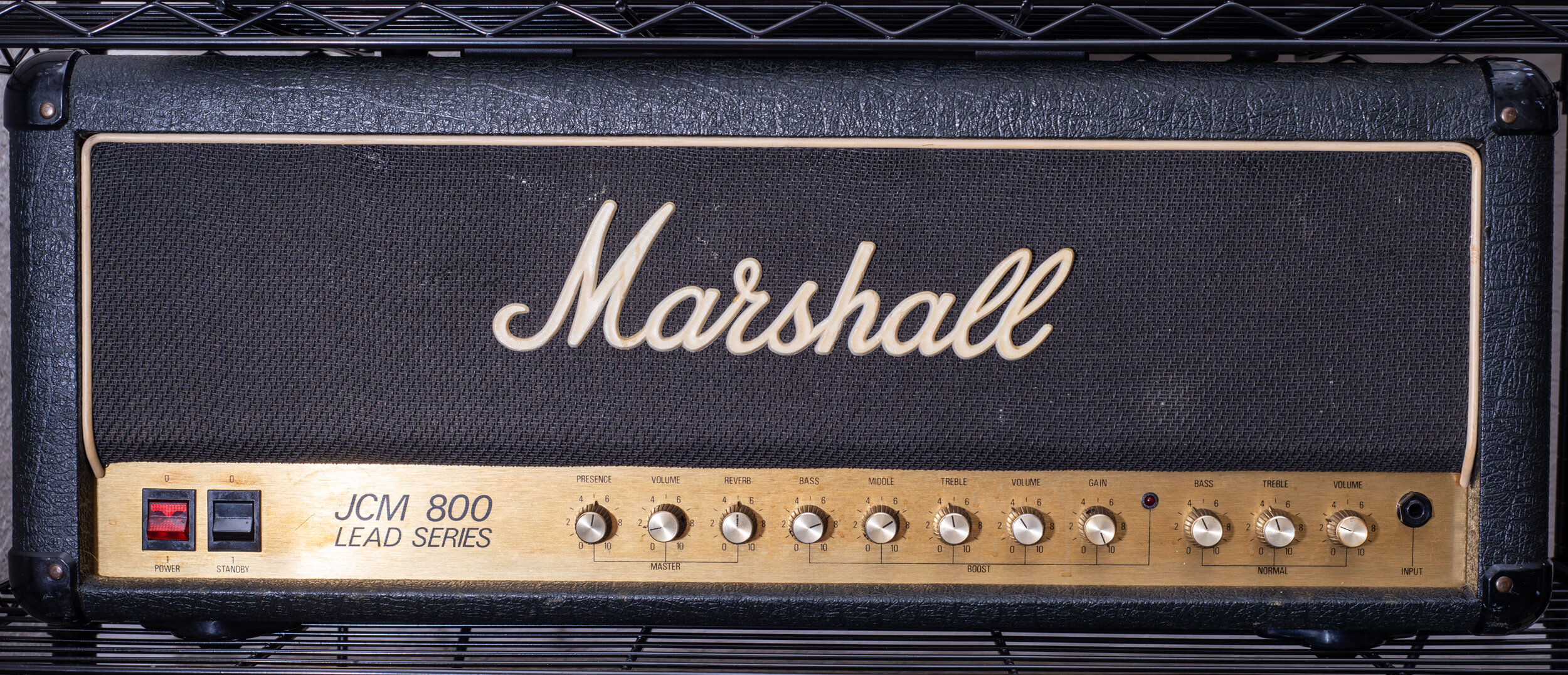I am on quite the streak with Marshall amps lately. On the same trip returning that Blankenship Plexi, my local GC happened to get this amp in stock, also on a customer return - they actually had to pull it from the back because it was not out on display.
I’m not sure why this amp was returned - I gave it a complete playthrough and tested every feature at every reasonable volume before taking it home for myself. A nice bonus, no shipping charge for once!
While we most commonly think of the “JCM800” as the sound of the 2203 and 2204 amps, the moniker “JCM800” is actually a range of models. You could buy a 1987/1959 circuit plexi circuit in a JCM800 shell, as well as your popular 2203/2204 circuits, or even this “split channel” circuit.
Lots of conflicting information floats around about these split channel JCM800 amps, model numbers 2205 (50w) and 2210 (100w) and their combo amp equivalents. Officially introduced in the year 1982, though I have seen some units with 1981 serial numbers, these were designed to push guitar tones and amp design into the next decade. With louder and higher gain tones demanded by artists of the time, and Eddie Van Halen’s famous Marshall Powered “brown sound” at the forefront of everyone’s mind, this amp was designed to offer both more gain as well as a more classic clean-ish normal channel, plus an effects loop and direct preamp line out for studio and modern PA usage.
Early models (82-84/85ish) had an odd placement of the EQ section, resulting in quite mixed reviews compared to the classic 2203/2204 models, which continued on from the JMP range that preceded the JCM800 range. With slow sales and mixed reviews, the split channel range was completely redesigned sometime in 1984 or 1985. The exact time is difficult to pin down but I have done my research and talked with others on the Marshall amp forums and found a few examples of 1985 and even 1984 models with the new circuit design. This redesigned circuit has less channel bleed, more gain, and the gain is structured differently - a bit more the Marshall sound we know and love, but darker and more saturated.
The premise is still the same though - both channels run in parallel much like a Plexi, but instead of separate inputs, they share the same input jack and can be footswitched to alternate between them. The “normal” channel is very much a stripped down non-master volume circuit (and can get extremely loud) and has only bass, treble, and volume controls. The “boost” channel is the evolution of the “high treble” channel on a plexi, and gets a lot of gain plus has the addition of a clipping diode circuit for even more gain. This channel has the usual 3-band EQ, a channel volume, and gain control. Both channel share a master section with an overall master volume, presence, and a reverb control which mixes in a tube driven spring reverb tank - groundbreaking features at the time.
My experience in the past with a 1982 model was disappointing, but I had played a 1988 model in a store long ago but didn’t have the money for it. This 1985 unit has the later circuit and sounds every bit as good as I remembered. It has a good amount of gain, but not so much that it gets overly saturated with a boost, and even the clean channel is bright and snappy and sounds great, if a little loud and hard to control at times. The master volume makes it surprisingly easy to get a decent tone at home studio volumes too. My only complaint is the reverb implementation is a little weak sounding, but it is the first attempt ever from Marshall at this sort of design. It can be turned off from the knob or footswitched off as well. The real highlight is the boost channel, which is just a killer 80s rock and metal tone, though I feel it really has to have the bass maxed out to sound good. The treble control is incredible sensitive, I usually set it around 3 for most music but if I take it up to 5 or 6, and especially if I lower the mids as well, it becomes a very aggressive thrash metal tone machine.
